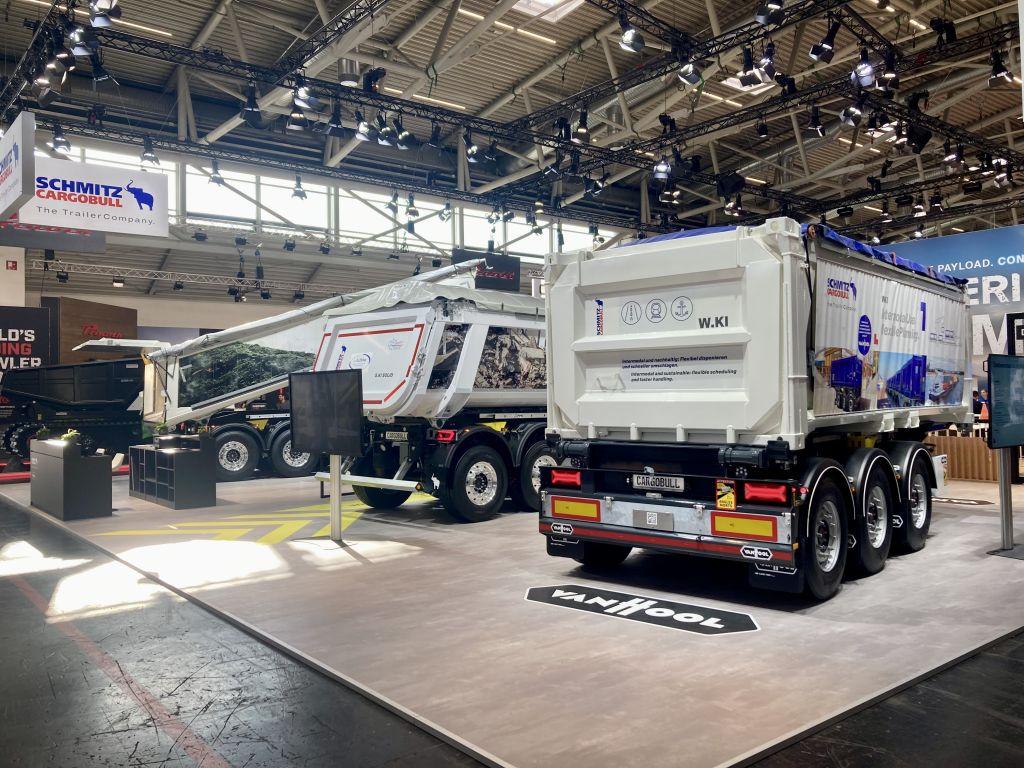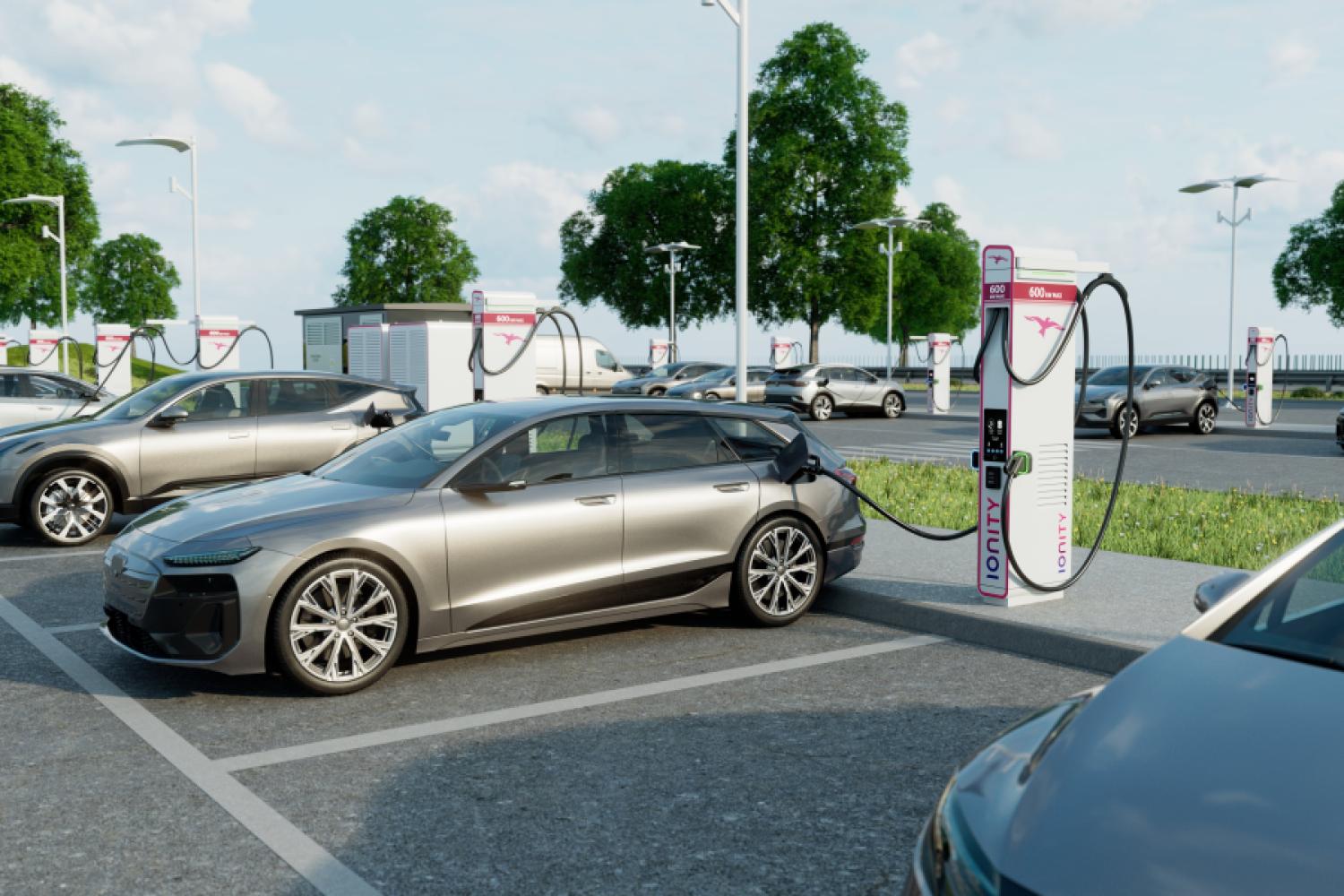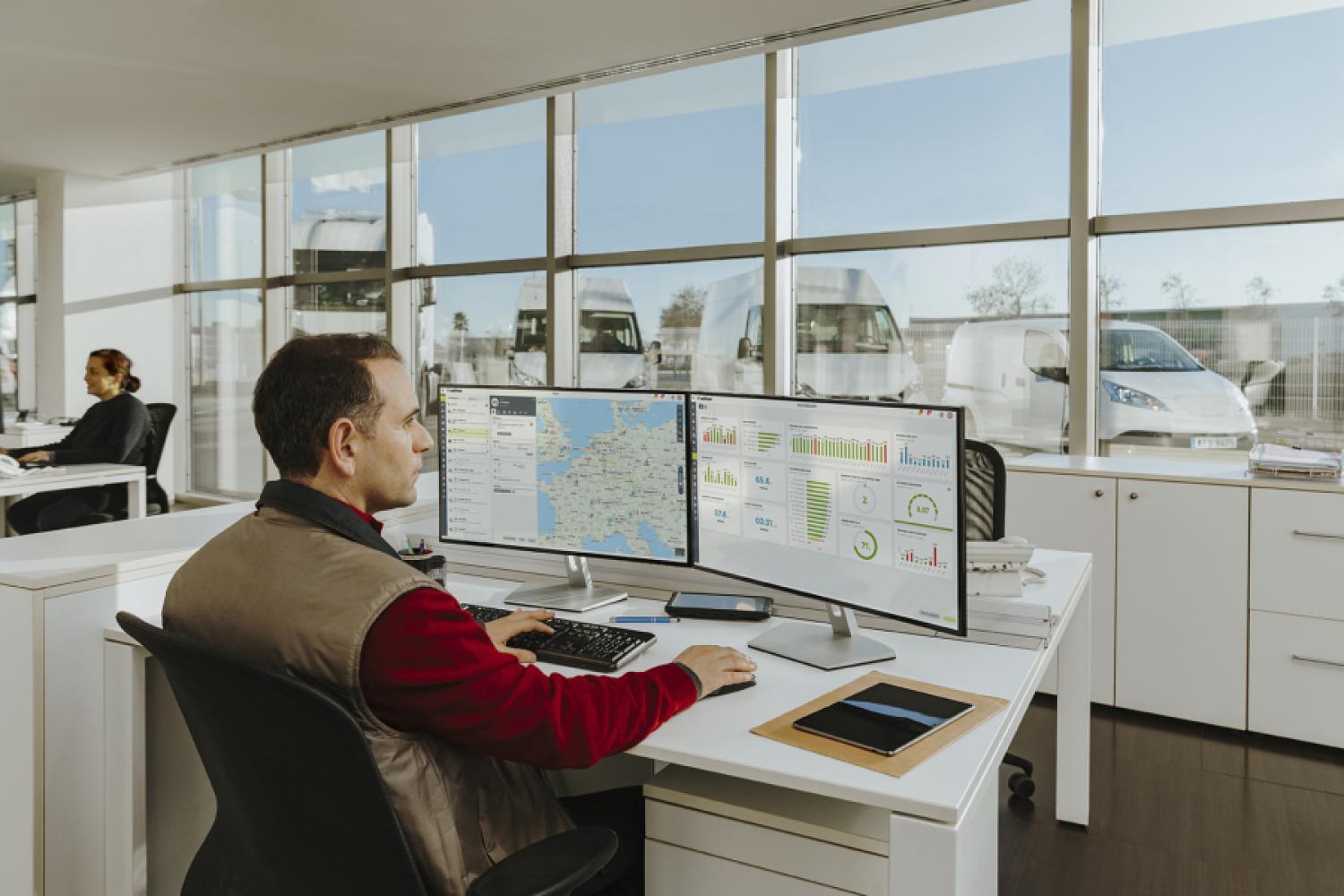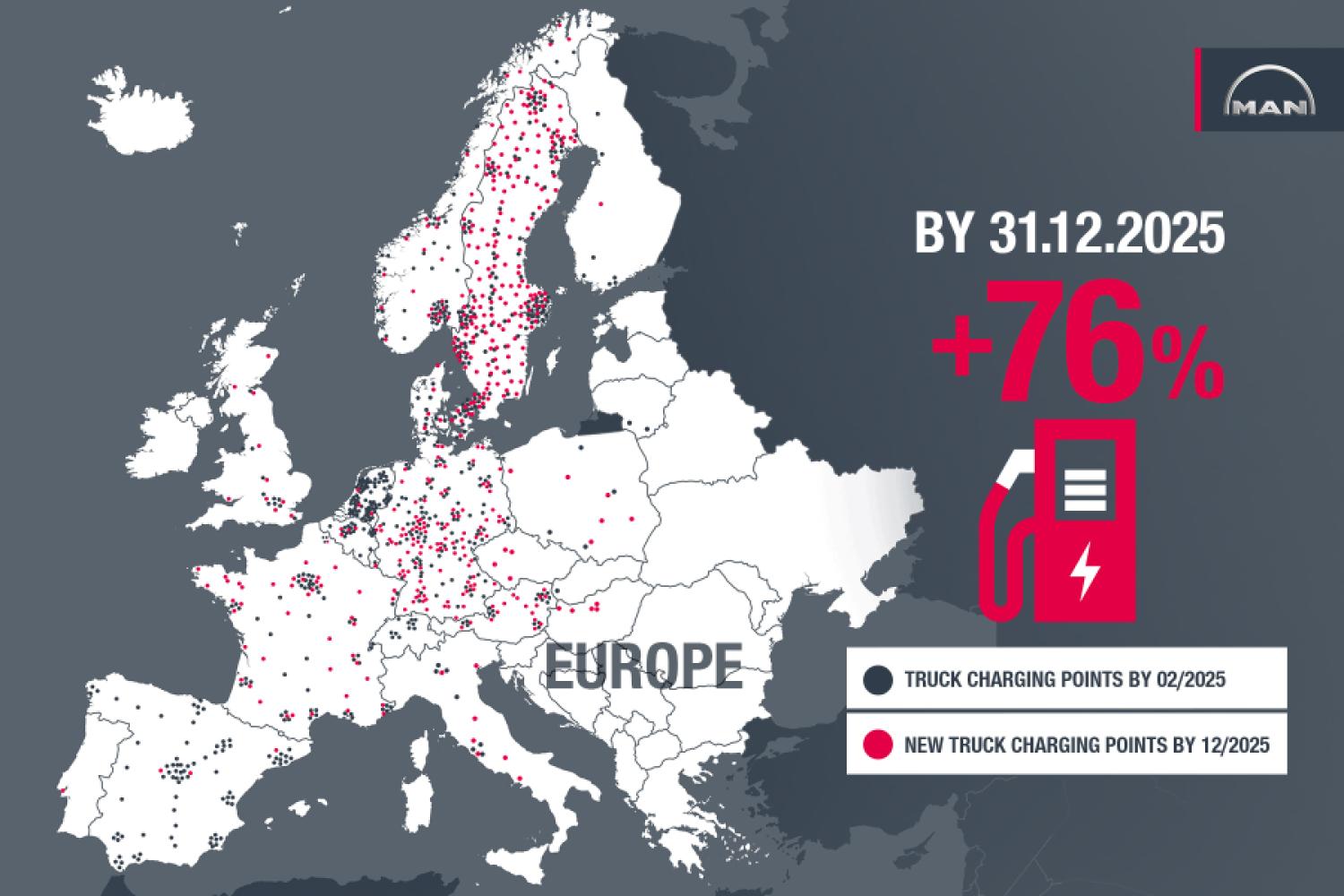The trailer or body is usually regarded as the "silent servant" that runs behind or on the truck, but this is typically where the money is made. In the construction and bulk material sector, every gram of payload helps, and for more complex structures, clearly more intelligence is needed to avoid misoperations as much as possible and to optimize routes and maintenance via telematics, since every breakdown is massively costly.
Concentration in the segment continues
Here, too, on our tour we were amazed at what has since happened in the segment – and how quickly the concentration is progressing: Van Hool's trailer division has now become the delicatessen department of Schmitz Cargobull, Schwarzmüller is a partner of Krone, with the people from Emsland having more control from behind the scenes than ever, and Reisch is just a name under the roof of Benalu-Legras, but at least they are back in business. Reisch and Schmitz Cargobull were present with some truck manufacturers and other body manufacturers in Hall B4.
Telematics systems are becoming more complex, smarter, and therefore still easier to use
For Cargobull, the Trailer Connect telematics system is now standard on board and is primarily intended to prevent tire blowouts through air pressure control. A significant innovation: when new tires are mounted, the sensors recognize this, eliminating the elaborate and often error-prone "training" of the new tire with pressure. The underride guard can also be controlled pneumatically from the cabin (the sensors recognize unloading and driving positions) and an optional cargo space and rear camera make handling on site easier without having to get out each time. The weights are subtly reduced, the S.KI light with a 24-cubic tipper body now starts at 4,650 kg tare weight and Van Hool contributes a "tiltable container," referred to as W.KI by Cargobull, which is ocean-ready-stackable.
At Schwarzmüller, they are also working on the weights and presented the full range of the program – including container trailers from the subsidiary Hüffermann, the four-axle low-loader trailer, and the TP 22 – a robust tandem axle which is hitched to the tractor for heavy-duty applications. Looking ahead, we definitely expect a strong increase in telematics options here, which the partner Krone is already utilizing intensively. So that Austro-trailers become not only light but also smart.
A few stands away, Kögel presented its new tipper, which has also slimmed down: As a steel-steel tri-axle, it starts at 5,200 kg – yet it is supposed to offer high stability, as the chassis is made of high-strength fine-grained steel and attention was paid to positioning the tipper as low as possible to ensure driving stability and load capacity. The Kögel parent Humbaur presented their low loaders and car trailers and packed a double package: when ordering a Kögel tip semi-trailer, Humbaur includes a car trailer.
White sausage breakfasts at Meiller: on the second day they already had to reorder from the butcher
People were also amazed at Meiller's constantly (over)crowded stand: We met press officer Elisabeth Egger, designer Christoph Tanner, and product manager Michael Eicheldinger, who was delighted:
“As an exhibitor from Bauma's early days, we are especially proud to be here again this year. We are overwhelmed by the national and international flow of visitors and their positive feedback and interest in our products.”
Insider tip on the side: Meiller had planned rather conservatively for 2025, with 60 contact persons and the same white sausage supply as in 2022. Due to the construction slump, there was fear of having to host white sausage breakfasts for weeks after the Bauma and sitting with bored personnel in the rain. But everything turned out differently! After just the second day, more white sausages had to be ordered, the stand staff had no idle time, and the sun was shining. The focus was once again on the new three-way tipper generation "Trigenius," as well as the smart rollers and loaders with intelligent follow-up control, and they even had more "exotic" items like the asphalt dump body – which was promptly sold right from the stand. That's why designer Tanner at Meiller is discreetly optimistic about the future, which at Meiller will also become more digital and lightweight.
Ultra-light: Fliegl's aluminum box body starts at 3,900 kilograms!
Not far away, Fliegl has its stand, where we meet Helmut Fliegl, who is also delighted with the lively interest and who has likely created one of the lightest aluminum tipping trailers with an unladen weight of 3,900 kilos. It is mainly used for aggregates and less abrasive goods, because when you pay attention to every gram, it requires certain compromises and skilled loaders and truck drivers. But: Those who heed this can, assuming a suitably light tractor unit, also carry 30 tons (!) of cargo. Managing director and owner Helmut Fliegl explained to us:
“When loads are paid by weight, you can calculate at what point the trailer pays for itself!”
Not to mention that energy is saved on every empty trip. Additionally, smart innovations like the "Drive-On" tipping stabilization system, which puts more pressure on the truck's drive axle when tipping and starting, the side foldable climbing aid "S.T.E.P," and the robust Stonemaster, which starts as a two-axle unit at 4,500 kilograms unladen weight. With this, we can attest that the weights of the tipping trailers have dropped by around 500 to 1,000 kilograms in the last decade thanks to new steel grades, designs, and manufacturing techniques!
The weights are also decreasing for low-loaders
The weights have also decreased in the low-loader segment: at Müller-Mitteltal, the three-axle trailer including ramps starts at 7,750 kilograms, and for the Faymonville Group or Broshuis, the weights also went down: Broshuis brought their new three-axle trailing steering semi-low loader. It features continuous axles in combination with air suspension, which makes the system low-maintenance. The trailer can be extended once, reaching a telescoped loading floor length of up to 15,200 mm. The most important thing: It is 15% lighter compared to its predecessor with more stability.
What we noticed at Broshuis and Doll: there were also two low-loaders painted in camouflage at the stand – not necessarily a good sign in the current political situation. Apart from that, Doll also refined the details: The three-axle low-bed came with even smarter operation and the Doll connect remote control with a 7-inch display, the so-called Doll-Control. What was noticeable at Doll and Broshuis: Both stands featured low-loaders in camouflage for military purposes – which, given the current political situation, was not necessarily the calming signal.
That alternative energies are preferred over nuclear power plants was shown by Goldhofer in the care given to wind power products: For instance, they were able to reduce the weight of the wind tower tube adapter RA3-100 by several kilos and revised its operation. And the self-propelled PST/ES-E now operates purely electrically.
Optimized products were also found at Kässbohrer, including the four-axle low-loader K.SLA R4/ 2N-18/40, which was also refined in detail. It starts at 14,735 kg empty weight and scores with even better corrosion protection – Kässbohrer recently invested further in new coating technology in Adapazari. In the case of tippers, efforts continued on weight, which has always been rather on the upper end at Kässbohrer because the vehicles are designed for extreme stability: The exhibited three-axle steel round tipper starts at 5,850 kg. Iffet Türken, Board Member and President of the Transport Section ESTA Europe, also advocates for stability at the political level. As a global citizen, she demands:
“Europe must finally grow together!”
Nothing more needs to be added to that.
What does this mean?
For trailers and bodies, too, the future will be greener and more digital: In this area, this is mainly reflected in lower weights and smarter designs.






